Have you ever wondered why a large percent of people despise going to the supermarket? Did you know that supermarkets draw out your path and control the way you navigate their stores? However, it is a good, studied, and analyzed customer journey map that makes or breaks your experience.
So, what is a Journey Map? A Journey map is a research-based visualization tool that shows the overall experience a customer has from the beginning of the first interaction with your organization, until the very last interaction with it over a certain time and across all the different channels. Customer journey mapping allows organizations to breakdown the customer’s experience to get a better understanding of their expectations through each step, and identify weak areas that need to be improved or completely re-designed.
Journey mapping allows companies, organizations, and service providers to learn more about their target audience by looking at a detailed timeline of interactions that identify the most important tasks and sub-tasks a user encounters, and how they think and feel in every step.
Not only can you identify weak problem areas in a customers’s journey, but you can also highlight points of strength in your service that the customers feels satisfied using, sustain its performance, and find new ways of enhancing it to create an even better experience for the user.
Creating a Journey Map
In order to create an ideal customer journey map, there are a few steps in the process you need to consider before starting:
- The first would be identifying your map’s Business Goal ; clearly stating who your customer is and which experience or service is your map going to address.
- The following step is to Conduct Research. To better understand your customer’s motives, interests, and actions, you have to get analytical data and evidence from their journey such as: surveys, interviews, and field research. These will help you understand your customer’s experience across multiple touch-points.
- Next, we have to assess those Touch-points (i.e. browse supermarket aisles, pay at cashier) as well as the different interaction Channels (i.e. online, offline) to identify the weak areas that affect the customer’s overall experience. You can also discover new channels or touch-points to include with your research for design opportunities.
- Now that you have gathered all the required data from your customer’s journey, the next step would be identifying your customer’s motives and incentives. What are they thinking, feeling, seeing, hearing, and doing at each step of the experience? In this step, you have to identify the “pains & gains” of the user interacting with your service.
- Following that, you will need to revise and refine your journey map findings and create the best visualization version of it including any artifacts found, quotes said, images captured and other relevant pieces of evidence that help support the story of the customer’s journey.
- Lastly, you have to share your customer journey map with all relevant stakeholders. They need to be able to visually see the whole journey experience and understand where the service’s weak links are; areas of improvement, and points of strength to be able to design and deliver the best possible customer experience.
What does a customer journey map actually look like?
This is it. Take a few minutes to read each step, and try to understand how each of the elements in this research-based tool work together.
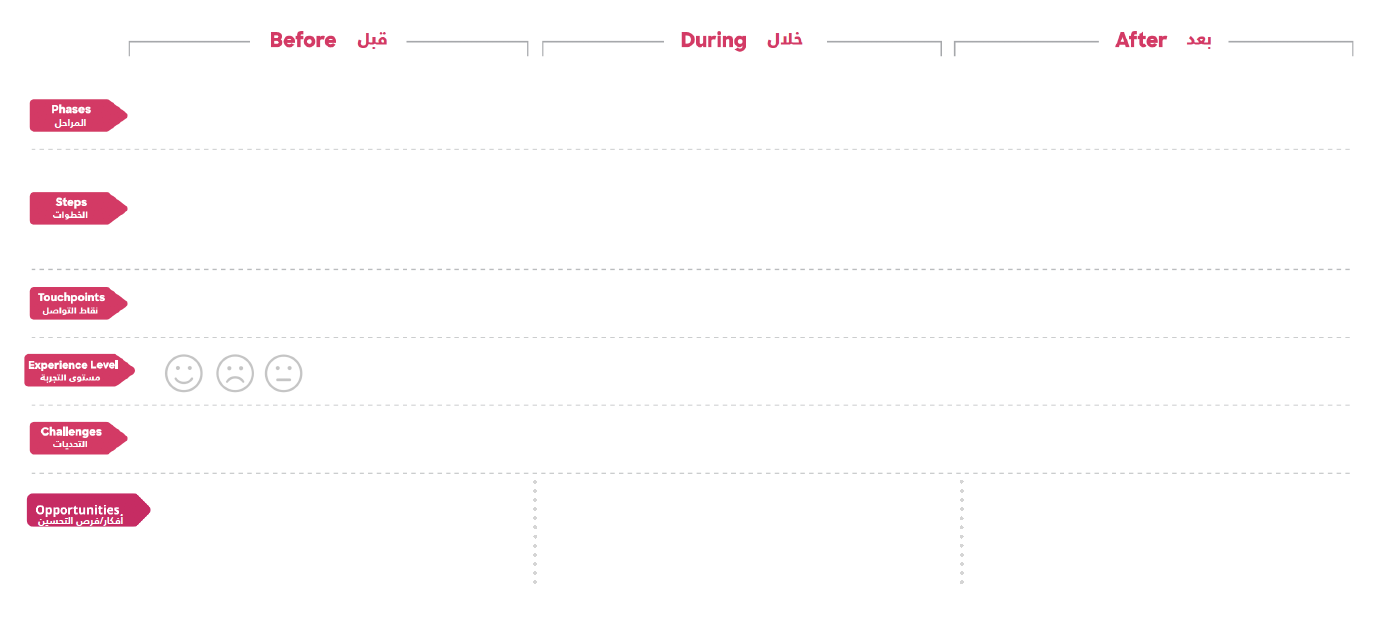
Stages
First at the very top you have the Stages of the customers’s journey: before, during, and after they have interacted with your service.
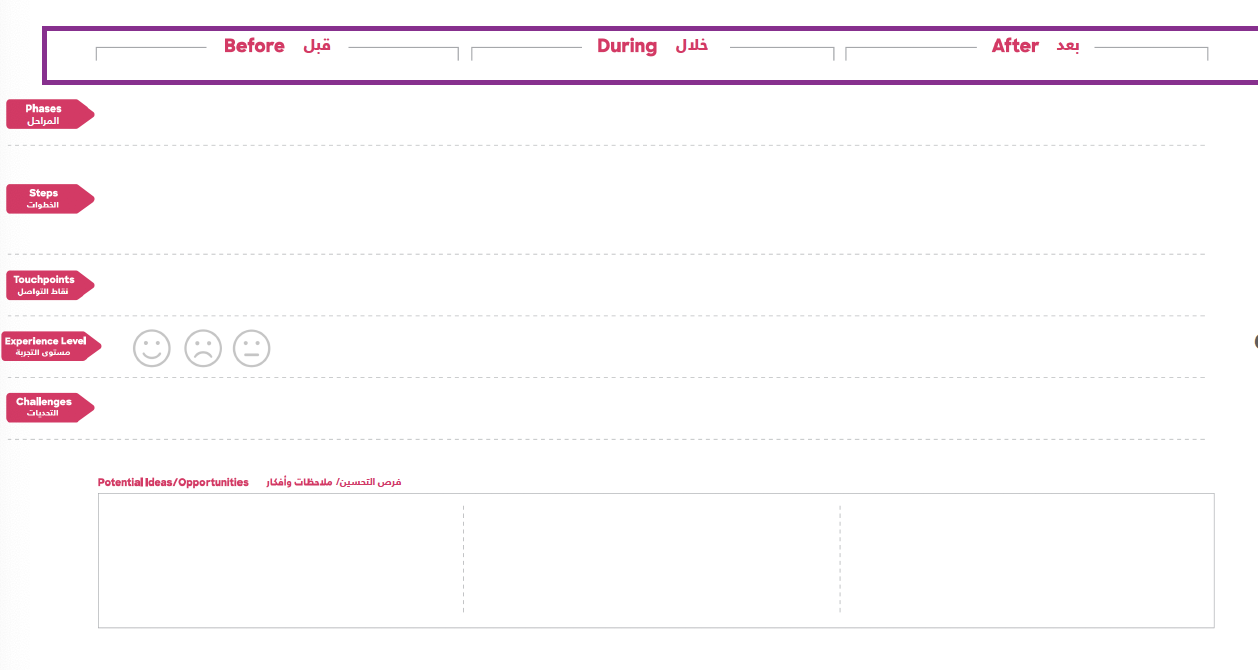
Phases
Next, you have to identify the key phases that your customer goes through at each stage of their journey. This section should be at high-level with very little details, but key phases. The rest of the details will be uncovered next.
Example: Before—Arriving to the supermarket; entering the supermarket.
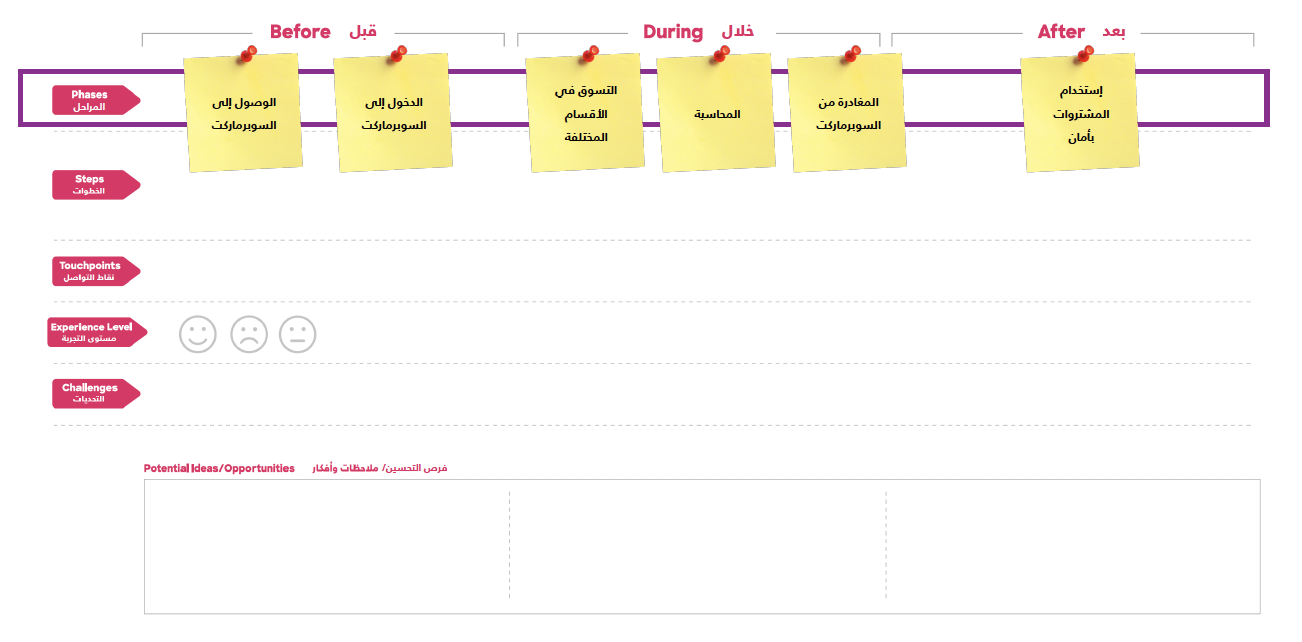
Steps
At this stage of journey mapping we can add more details to the key phases with that will help us understand the steps that the customer is taking during their journey.
Example: Before— looking for a parking spot; finding signs to the elevator; finding the supermarket floor number/button; reaching the floor, and entering the supermarket.
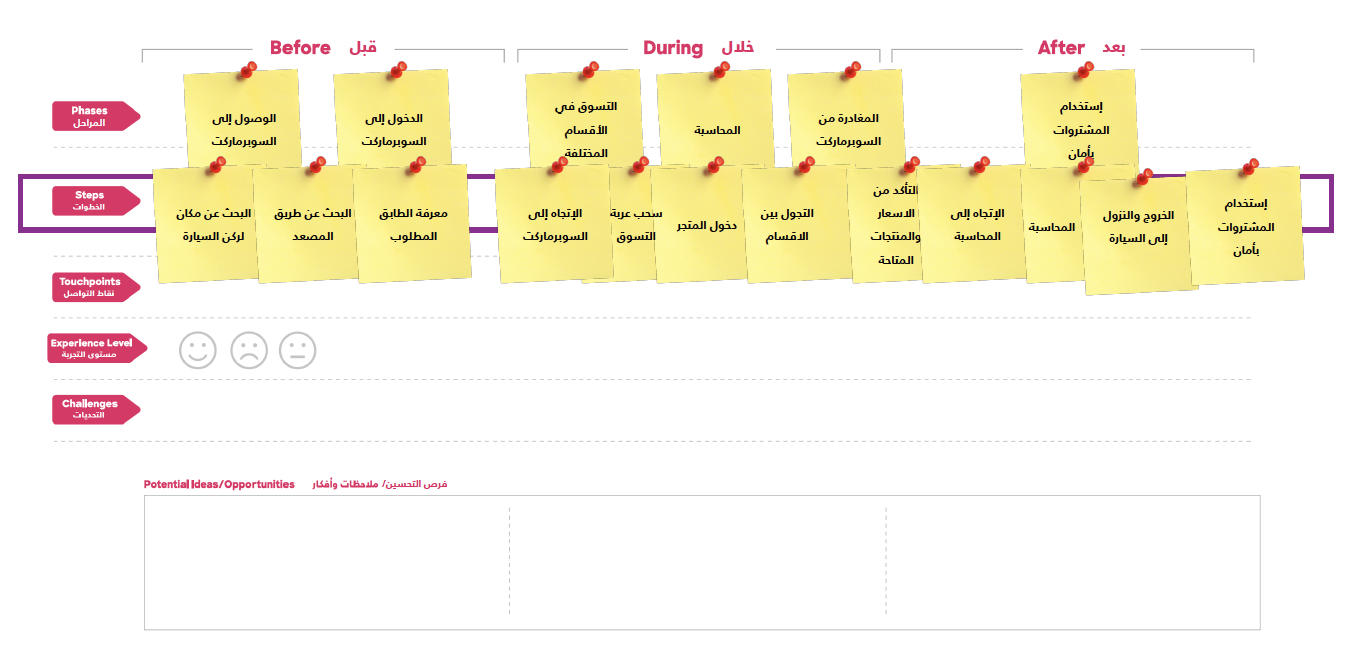
Touch-points
We can now go into furhter details by understanding what helps the customer come to their decision, and what are the elements or touch-points of interaction between your business and your customer. Touch-points are interfaces (physical and non-physical) through which your customer interacts with your organization. These interactions may be as simple as finding the elevator button to go to and from the parking lot to the supermarket, or interacting with another human-being.
Example: During—finding shopping carts; looking for labelled aisles, holding/browsing products; finding product prices.
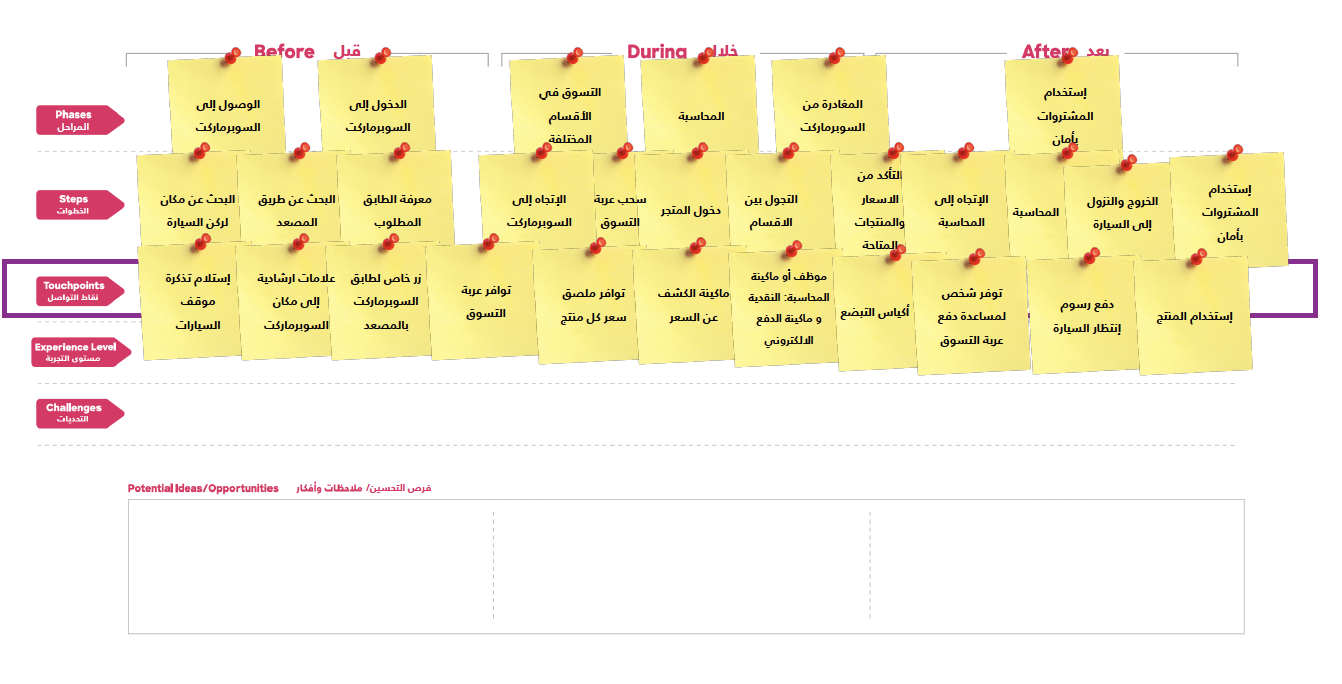
Experience Level
This is where we map the customer’s emotions. It is essential to capture these emotions so that you may sustain them if they are positive or fix them if they are negative.
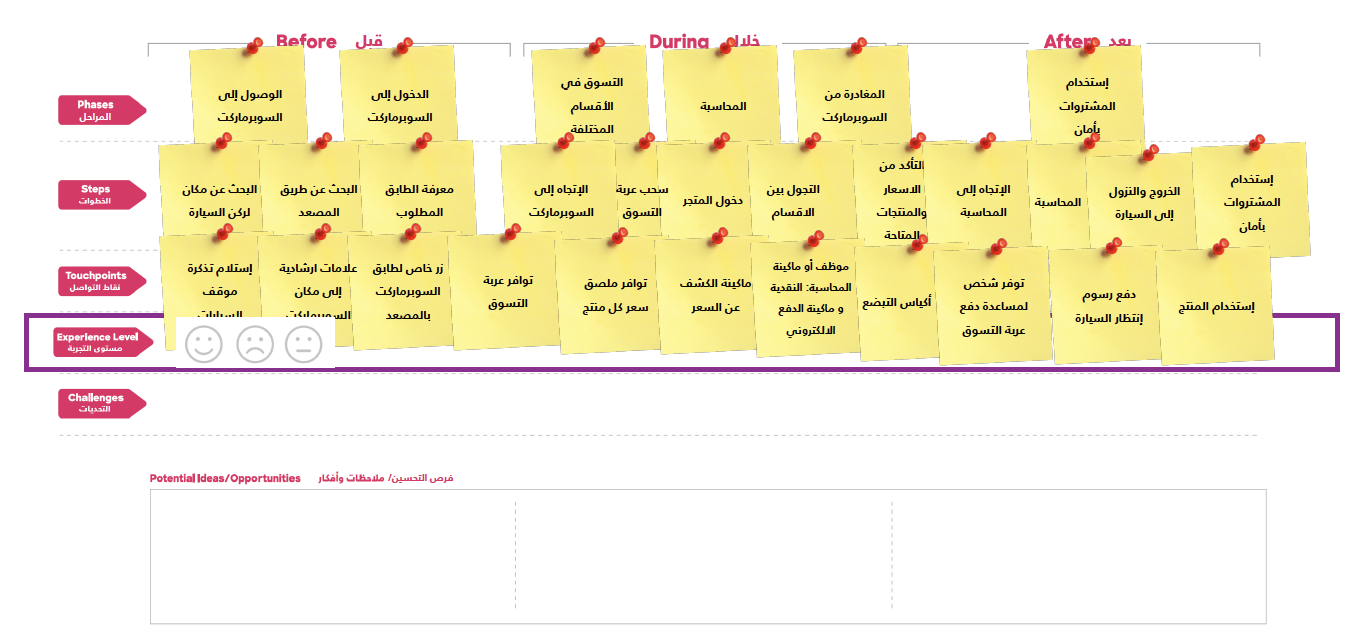
Challenges
After identifying the steps, touch-points, and the experience level, we then detail the challenges that the customer faces in his journey and capture information such as where do they occur; who are they interacting with, and what are they trying to accomplish within this step. These challenges will help us later in redesigning new experiences that enhances the customer’s experience.
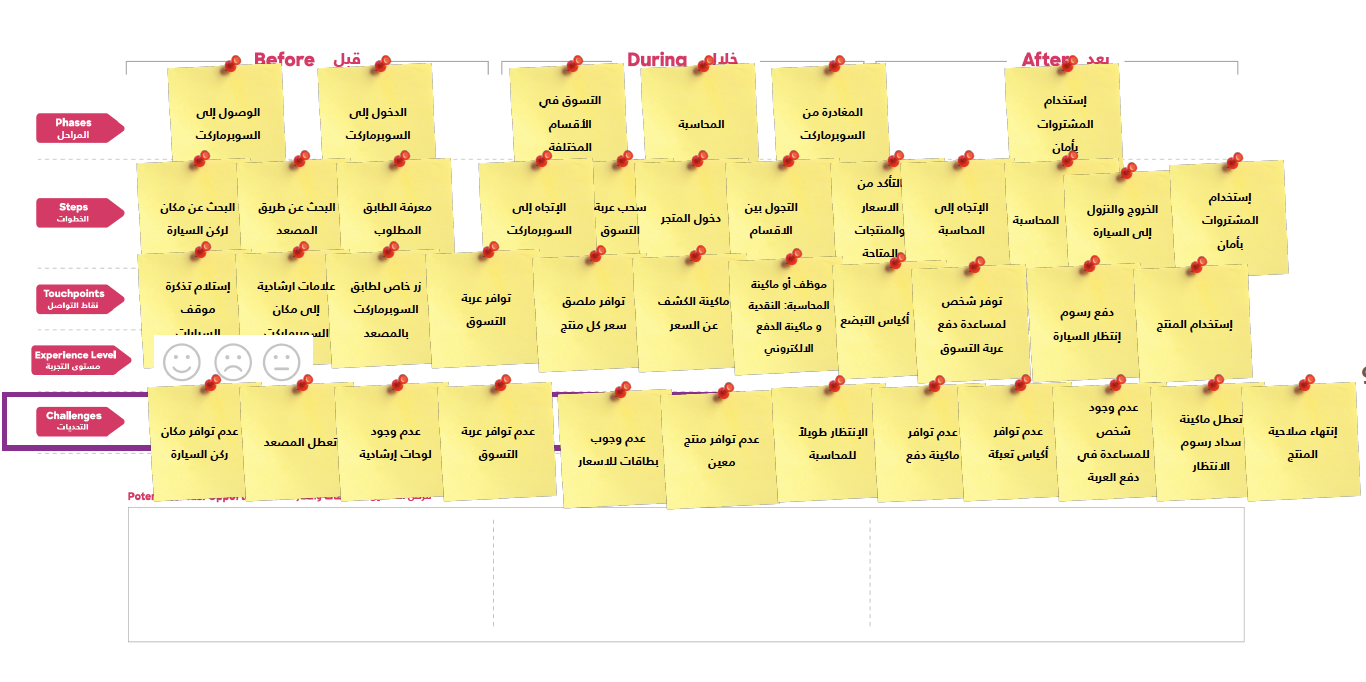
Potential Ideas/Opportunities
These are areas which highlight the need for improvement and innovation in the customer’s journey. Some of these opportunities may be minor and seem simple, but results in great impact to the customer’s overall experience. These opportunities may be systematic, operational, visual, or even physical.
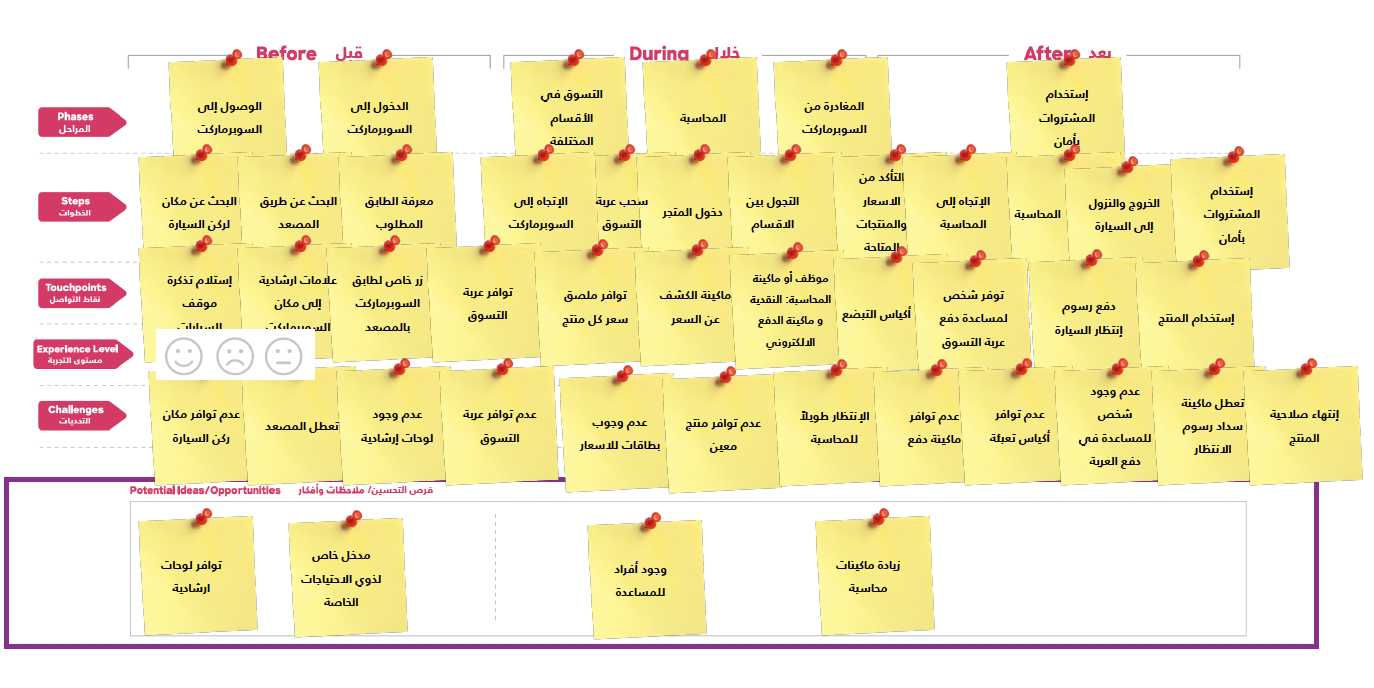
So that was our brief guide to customer journey mapping. The success of your service is highly dependent on the success of your customer journey. Your journey map needs to measure how well and effectively it helps your business/organization to identify pain points, as well as opportunities for improvement as it follows the steps in the customer’s path from start to finish.
Futhermore, a service is delivered when diffferent stakeholders and departments come together. A visual and detailed customer journey map helps bring in all of these stakeholder together and unites them in seeing the big picture of their customer; a unity which many organizations lack despite its importance.


